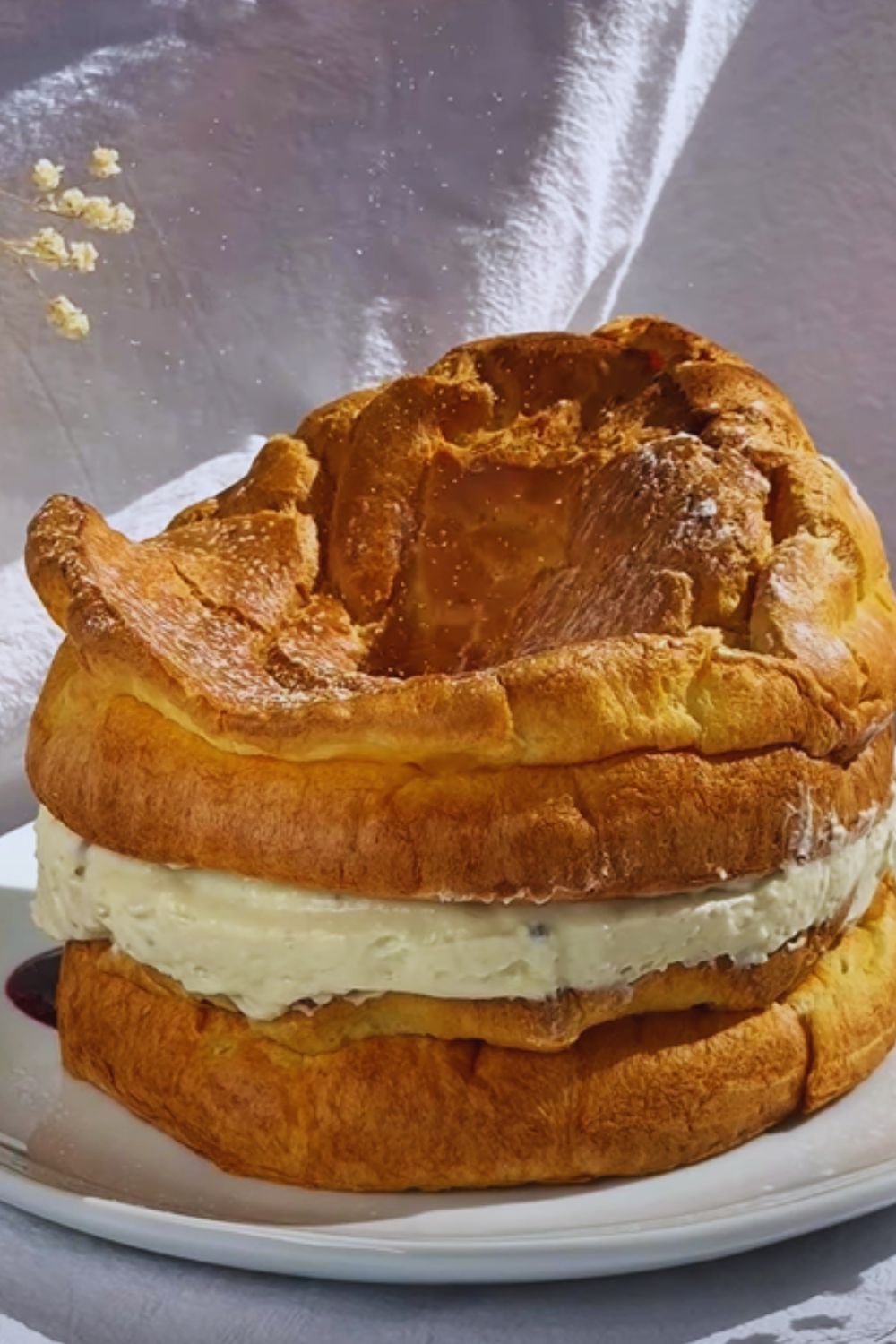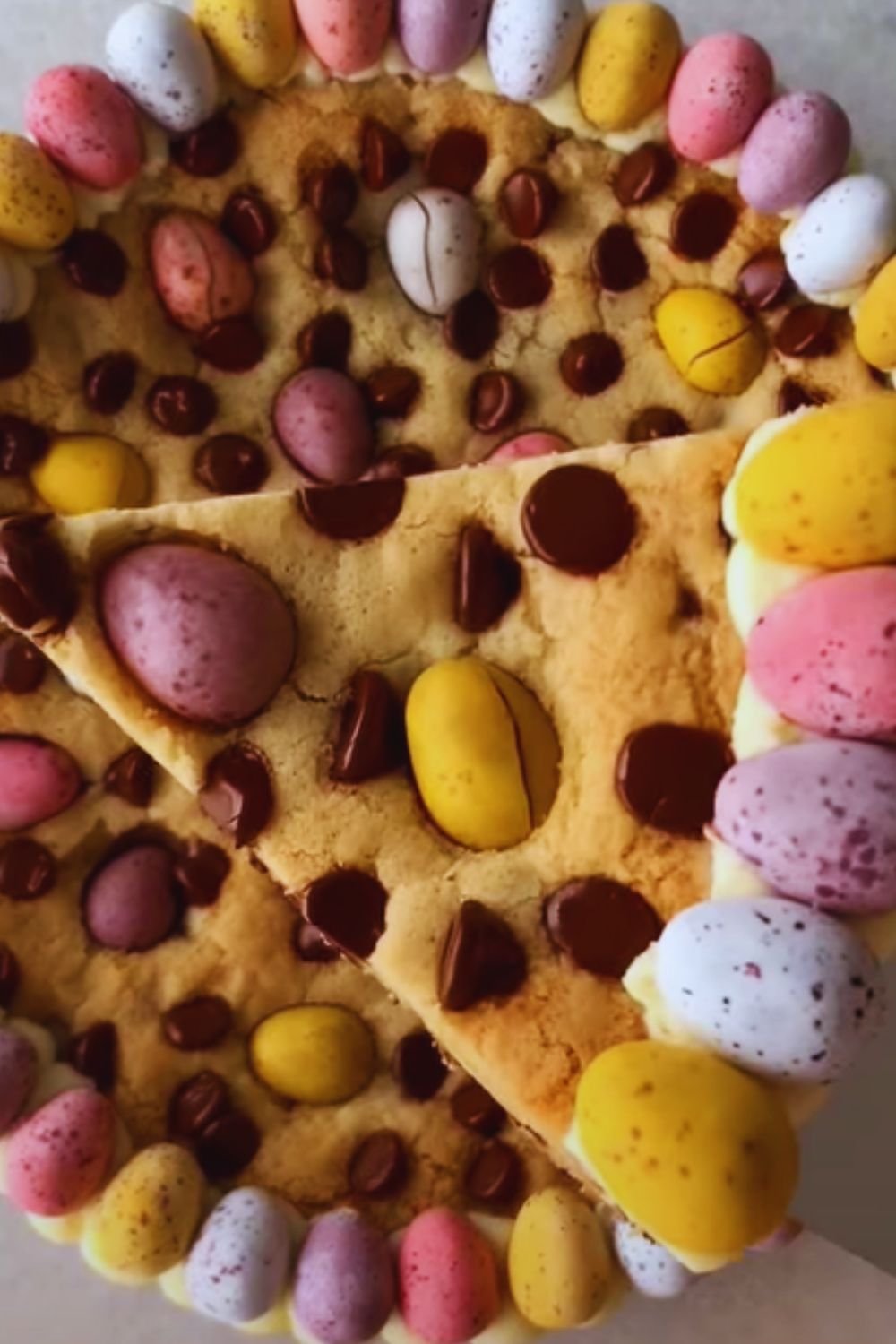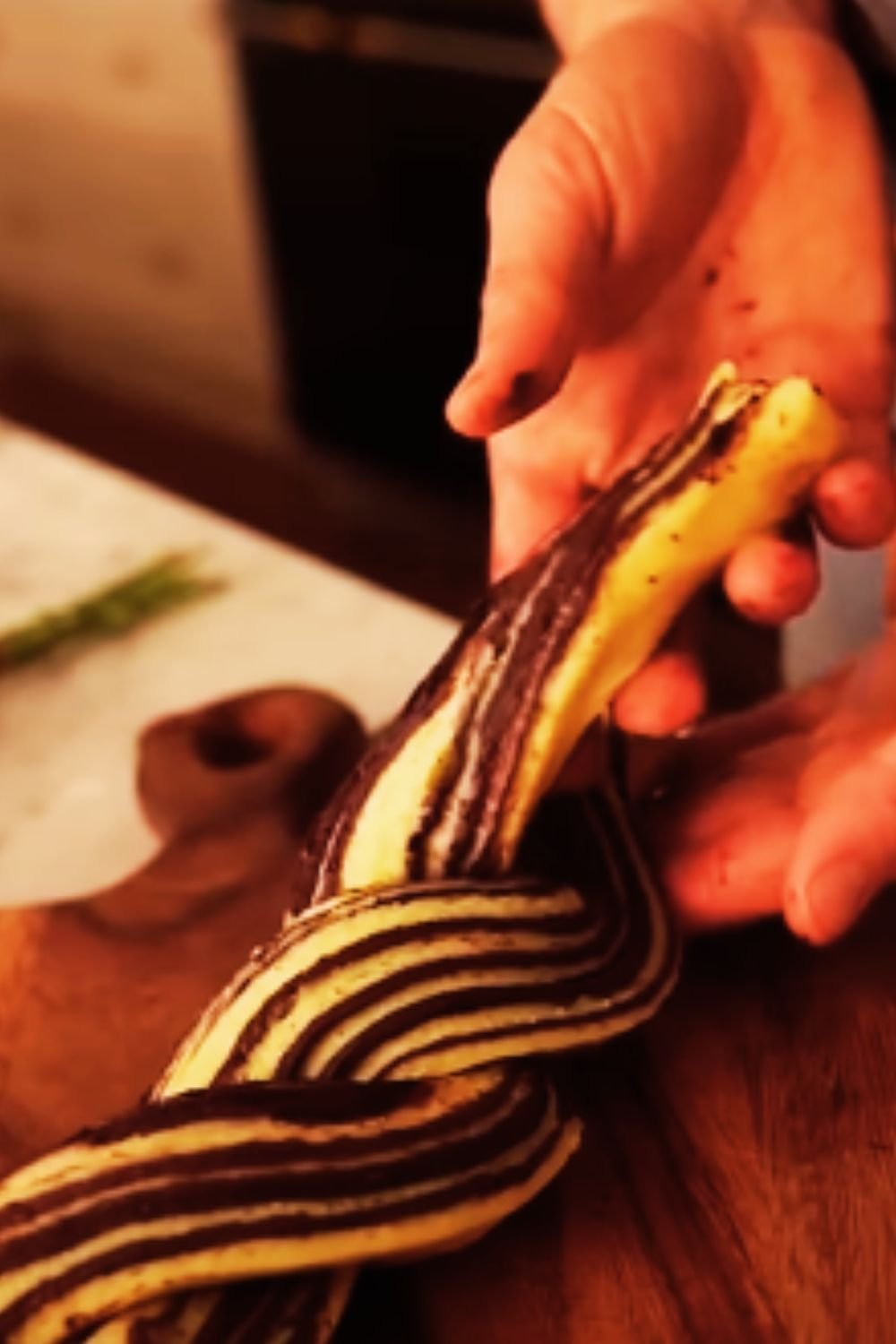Have you ever tasted a dessert so divine that it transported you to pastry heaven with just one bite? That’s exactly what happened to me when I first tried Karpatka cake. This magnificent Polish dessert, with its mountain-like appearance and luscious custard filling, has become one of my absolute favorite treats to both make and share. Today, I’m thrilled to walk you through everything you need to know about creating this spectacular dessert in your own kitchen.
What is Karpatka Cake?
Karpatka (pronounced kar-PAT-kah) is a traditional Polish dessert consisting of two layers of choux pastry with a creamy vanilla custard sandwiched between them. The name “Karpatka” comes from the Carpathian Mountains that stretch across Poland’s southern border – the cake’s uneven, craggy top resembles the peaks and valleys of these mountains.
Unlike many layered cakes that prioritize a perfectly smooth appearance, Karpatka celebrates imperfection. Its rustic, mountain-like texture is actually what makes it so visually appealing and unique among European pastries.
A Brief History of Karpatka
Before diving into the recipe, I think it’s important to appreciate where this delightful dessert came from. While researching Karpatka’s origins, I discovered that it belongs to the proud tradition of Polish baking that dates back centuries.
Choux pastry (the type used for Karpatka) has French origins, but Polish bakers adapted and transformed it into something uniquely their own. Karpatka emerged as a homestyle dessert that Polish families would prepare for special occasions and Sunday gatherings. It’s comfort food at its finest – unpretentious yet incredibly satisfying.
What makes Karpatka particularly special is how it represents the ingenuity of home bakers. During times when fancy ingredients were scarce, clever cooks created spectacular desserts using simple components like flour, eggs, milk, and sugar. The result is this magnificently rustic cake that has stood the test of time.
Essential Ingredients for Authentic Karpatka
To create an authentic Karpatka, you’ll need quality ingredients for both the choux pastry layers and the custard filling. Here’s what I gather whenever I’m preparing to make this delightful treat:
For the Choux Pastry Layers:
- 1 cup water
- ½ cup unsalted butter
- 1 cup all-purpose flour
- 4 large eggs
- Pinch of salt
- 1 tablespoon sugar
For the Vanilla Custard Filling:
- 4 cups whole milk
- 1 cup granulated sugar
- ⅓ cup cornstarch
- 6 large egg yolks
- 2 teaspoons vanilla extract or 1 vanilla bean, split and scraped
- 1 cup unsalted butter, softened
- Pinch of salt
For Finishing:
- Powdered sugar for dusting
The beauty of Karpatka lies in its simplicity – these basic ingredients transform into something extraordinary through the baking process.
Equipment You’ll Need
Before starting on your Karpatka journey, make sure you have these essential tools ready:
- Two 9×13 inch baking pans
- Parchment paper
- Medium-sized saucepan
- Wooden spoon
- Stand mixer or hand mixer
- Mixing bowls
- Whisk
- Spatula
- Sieve for dusting powdered sugar
Having everything prepared beforehand makes the process much smoother, which I’ve learned from experience!
Step-by-Step Karpatka Recipe
Now, let’s dive into the process of creating this magnificent dessert. I’ve broken it down into manageable steps to ensure your success.
Preparing the Choux Pastry:
- Preheat your oven to 375°F (190°C). Line two 9×13 inch baking pans with parchment paper.
- In a medium saucepan, combine water, butter, salt, and sugar. Bring to a boil over medium heat.
- Once boiling, remove from heat and immediately add all the flour at once. Stir vigorously with a wooden spoon until the mixture forms a ball and pulls away from the sides of the pan.
- Return the pan to low heat and continue stirring for about 1-2 minutes to dry out the dough slightly.
- Transfer the dough to a mixing bowl and let it cool for about 5 minutes.
- Add eggs one at a time, beating thoroughly after each addition until the dough becomes smooth and glossy. The dough should be thick enough to hold its shape but still be slightly soft.
- Divide the dough evenly between the two prepared pans, spreading it with a spatula. Don’t worry about making it perfectly smooth – remember, the uneven texture is characteristic of Karpatka!
- Bake for 25-30 minutes until golden brown and puffed up. The tops should be craggy and uneven.
- Once baked, remove from the oven and let cool completely in the pans.
Making the Custard Filling:
- In a saucepan, heat 3 cups of milk until steaming but not boiling.
- In a separate bowl, whisk together sugar, cornstarch, egg yolks, and the remaining 1 cup of cold milk until smooth.
- Slowly pour about 1 cup of the hot milk into the egg mixture, whisking constantly to temper the eggs.
- Pour this mixture back into the saucepan with the remaining hot milk.
- Cook over medium heat, whisking constantly, until the mixture thickens and comes to a gentle boil. This should take about 5-7 minutes.
- Remove from heat and add vanilla extract (or vanilla bean seeds) and salt.
- Transfer to a bowl and cover with plastic wrap, pressing it directly onto the surface of the custard to prevent a skin from forming. Let cool to room temperature.
- Once cooled, beat the softened butter until light and fluffy.
- Gradually add the cooled custard to the butter, beating continuously until smooth and creamy.
Assembling the Karpatka:
- Choose which choux pastry layer will be the bottom and place it on your serving plate or cake stand.
- Spread the custard filling evenly over the bottom layer.
- Carefully place the second pastry layer on top, with the most textured, mountain-like side facing up.
- Refrigerate for at least 2 hours, preferably overnight, to allow the flavors to meld and the filling to set.
- Before serving, dust generously with powdered sugar to enhance the “mountain peak” effect.
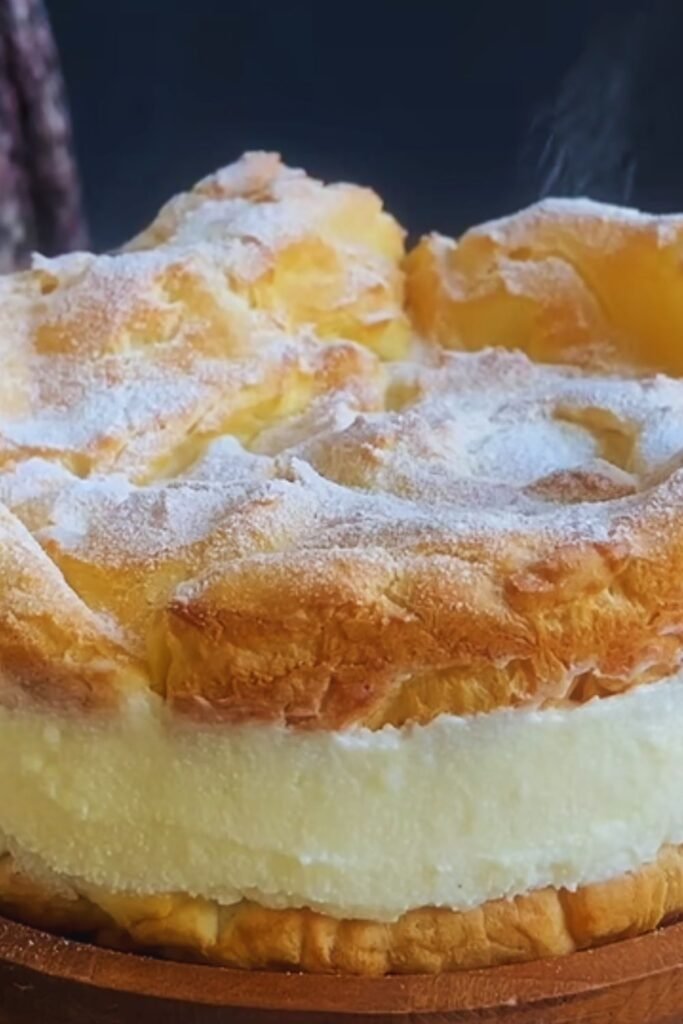
Common Challenges and Solutions
In my journey of mastering Karpatka, I’ve encountered a few challenges. Here are some issues you might face and how to overcome them:
| Challenge | Cause | Solution |
|---|---|---|
| Flat choux pastry | Opening the oven door too early | Resist the temptation to check your pastry until at least 20 minutes have passed |
| Runny custard | Insufficient cooking time or heat | Cook the custard until it noticeably thickens and coats the back of a spoon |
| Custard with lumps | Adding hot milk too quickly to eggs or insufficient whisking | Temper eggs properly and whisk continuously when heating the custard |
| Soggy bottom layer | Assembling while components are still warm | Ensure both the pastry and filling are completely cool before assembling |
| Filling oozing out | Too much filling or not chilled enough | Use slightly less filling and refrigerate longer before serving |
| Pastry lacking height | Incorrect oven temperature | Ensure your oven is properly preheated and maintain temperature throughout baking |
Variations of Karpatka to Try
While the traditional Karpatka is utterly delicious on its own, I’ve experimented with several variations that have turned out wonderfully:
Chocolate Karpatka
Add 2 tablespoons of cocoa powder to the choux pastry and incorporate 4 ounces of melted dark chocolate into the custard filling for a decadent chocolate version.
Lemon Karpatka
Add lemon zest to the choux pastry and incorporate lemon juice and additional zest into the custard for a refreshing citrus twist.
Caramel Karpatka
Replace half the sugar in the custard with caramel sauce and drizzle additional caramel over the top before dusting with powdered sugar.
Seasonal Fruit Karpatka
Layer thinly sliced seasonal fruits like strawberries or peaches between the custard and top layer for a fruity dimension.
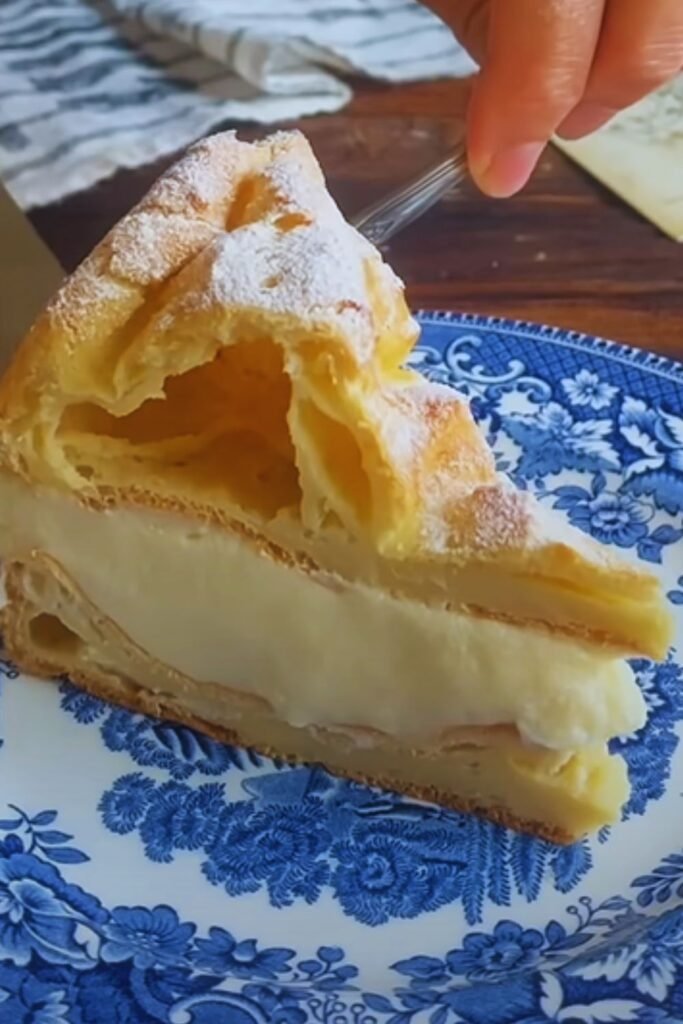
Tips for a Perfect Karpatka Every Time
After making Karpatka dozens of times, I’ve collected some valuable insights that can help you achieve the best results:
- Room temperature eggs: Using eggs at room temperature helps them incorporate more easily into the choux pastry.
- Patience with the custard: Don’t rush the cooking process of the custard. Low and slow is the way to go to avoid scorching.
- The cooling period matters: Allow sufficient time for both the pastry and custard to cool completely before assembling.
- Overnight refrigeration: While you can serve Karpatka after a few hours of chilling, the flavors develop magnificently when left overnight.
- Serving temperature: Remove the cake from the refrigerator about 30 minutes before serving to allow the filling to soften slightly.
- Fresh is best: Karpatka is at its prime when consumed within 2-3 days of making it.
Nutritional Information
For those who are curious about the nutritional aspects of this dessert, here’s an approximate breakdown per serving (assuming 12 servings per cake):
| Nutrient | Amount per Serving |
|---|---|
| Calories | 420 kcal |
| Total Fat | 28g |
| Saturated Fat | 17g |
| Cholesterol | 180mg |
| Sodium | 85mg |
| Total Carbohydrates | 38g |
| Dietary Fiber | 0.5g |
| Sugars | 22g |
| Protein | 7g |
While Karpatka is definitely an indulgent treat, it’s worth every calorie for special occasions!
Serving Suggestions
I’ve found that Karpatka is wonderful on its own, but these accompaniments can elevate it even further:
- A small dollop of lightly whipped cream
- Fresh berries on the side
- A sprinkle of cinnamon or cocoa powder along with the powdered sugar
- High-quality vanilla ice cream for an extra decadent dessert
- Hot tea or coffee to balance the sweetness
- A drizzle of raspberry coulis for color and tang

Storage and Freezing Tips
If by some miracle you have leftover Karpatka (which rarely happens in my house!), here’s how to store it properly:
Refrigeration:
- Store assembled Karpatka covered in the refrigerator for up to 3 days.
- The pastry will gradually soften as it sits, which many people (myself included) actually prefer.
Freezing Components:
- The baked choux pastry layers can be frozen separately for up to 1 month.
- Wrap them well in plastic wrap and then aluminum foil.
- Thaw at room temperature before assembling.
- I don’t recommend freezing the custard or the assembled cake, as the texture suffers significantly.
The Cultural Significance of Karpatka
In Poland, sharing Karpatka with family and friends is more than just enjoying a delicious dessert—it’s about preserving cultural traditions and creating memories. I’ve found that introducing this cake to my friends has always resulted in delighted expressions and requests for the recipe.
What I especially love about Karpatka is how it represents the Polish approach to hospitality—generous, heartfelt, and without pretense. The cake doesn’t try to be perfectly polished; instead, it celebrates natural beauty and exceptional flavor.
Frequently Asked Questions
Over the years, I’ve been asked many questions about making Karpatka. Here are answers to the most common inquiries:
Q: Why did my choux pastry collapse after baking? A: This usually happens when the pastry isn’t baked long enough. Make sure to bake until it’s thoroughly golden and feels dry to the touch. Also, avoid opening the oven door during the first 20 minutes of baking.
Q: Can I make Karpatka ahead of time for a party? A: Absolutely! In fact, I recommend making it a day in advance. The flavors develop beautifully overnight, and it gives the custard time to properly set.
Q: My custard is too thin. What went wrong? A: The custard likely wasn’t cooked long enough or at a high enough temperature. It should thicken considerably on the stove before cooling. If it’s still too thin after cooling, you can try incorporating less into the butter or even adding a bit more softened butter to stabilize it.
Q: Is it necessary to use a stand mixer for the choux pastry? A: While a stand mixer makes the process easier, you can achieve good results with a hand mixer or even a wooden spoon and some elbow grease. Just make sure each egg is fully incorporated before adding the next.
Q: Can I use vanilla pudding mix instead of making custard from scratch? A: While traditional Karpatka uses homemade custard, you can use pudding mix in a pinch. However, the flavor won’t be as rich and complex as the homemade version. If using pudding mix, I suggest enhancing it with some additional vanilla extract and folding in whipped butter to achieve a similar texture.
Q: Why is my top layer sliding off the filling? A: This can happen if the filling is too soft or if the cake is served too warm. Make sure to refrigerate the assembled cake for at least 4 hours, and keep it refrigerated until about 30 minutes before serving.
Q: Can I add alcohol to the custard? A: Yes! A tablespoon of rum or amaretto adds a wonderful flavor dimension to the custard. Add it after cooking, along with the vanilla.
In Conclusion
Making Karpatka is truly a labor of love, but the end result is absolutely worth every minute spent in the kitchen. The combination of light, airy choux pastry with rich, creamy custard creates a textural and flavor experience that’s hard to beat.
What I find most rewarding about making Karpatka is seeing the joy it brings to those who try it for the first time. There’s always that moment of surprise when they take their first bite and realize this rustic-looking cake holds such extraordinary flavor.
I encourage you to embrace the process, enjoy the journey, and don’t worry too much about creating a “perfect” looking cake. After all, the uneven, mountain-like texture is what makes Karpatka so charming and unique.
Whether you’re connecting with your Polish heritage or simply exploring new culinary adventures, Karpatka offers a delicious way to experience a beloved European tradition. Happy baking!
